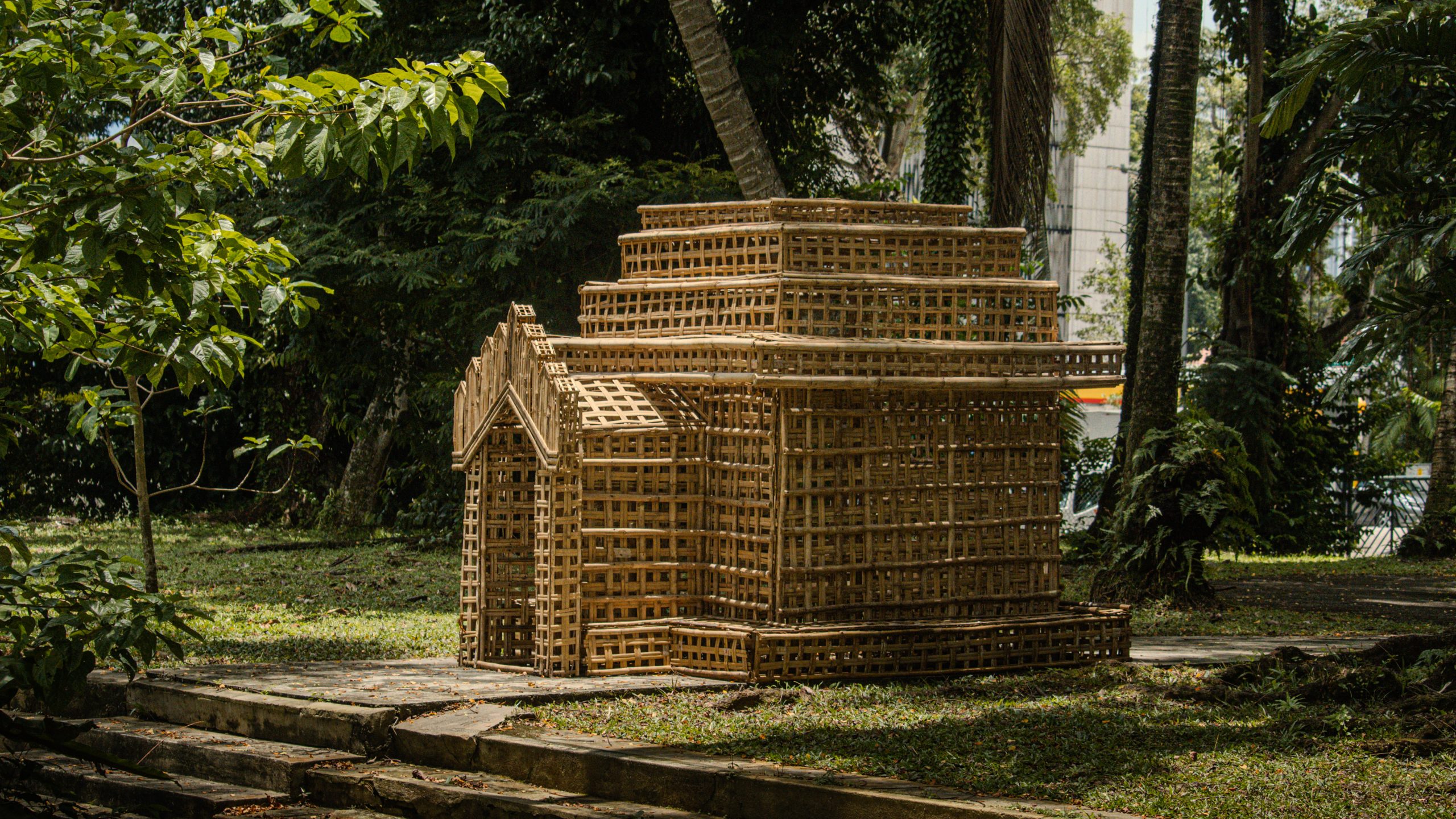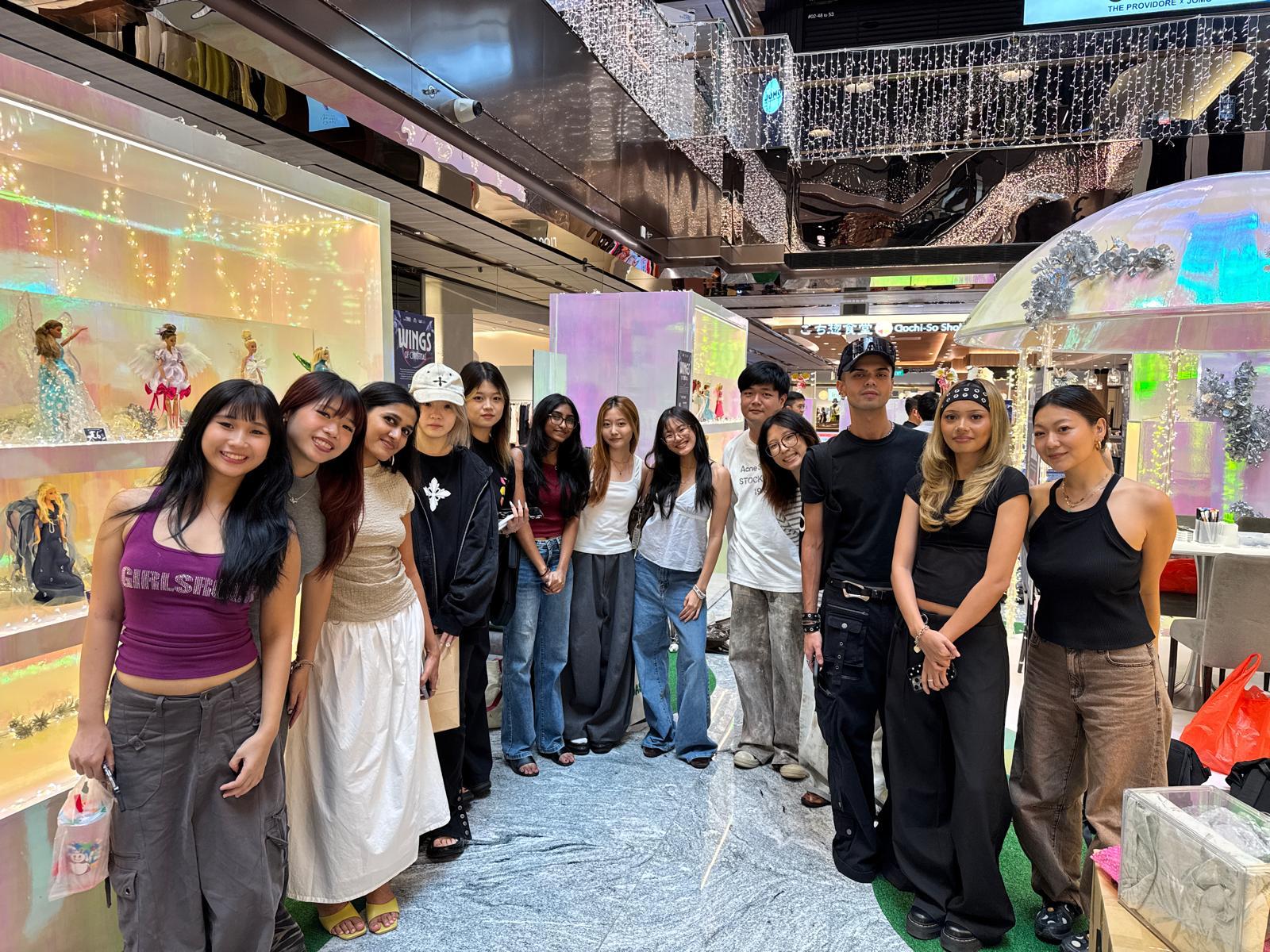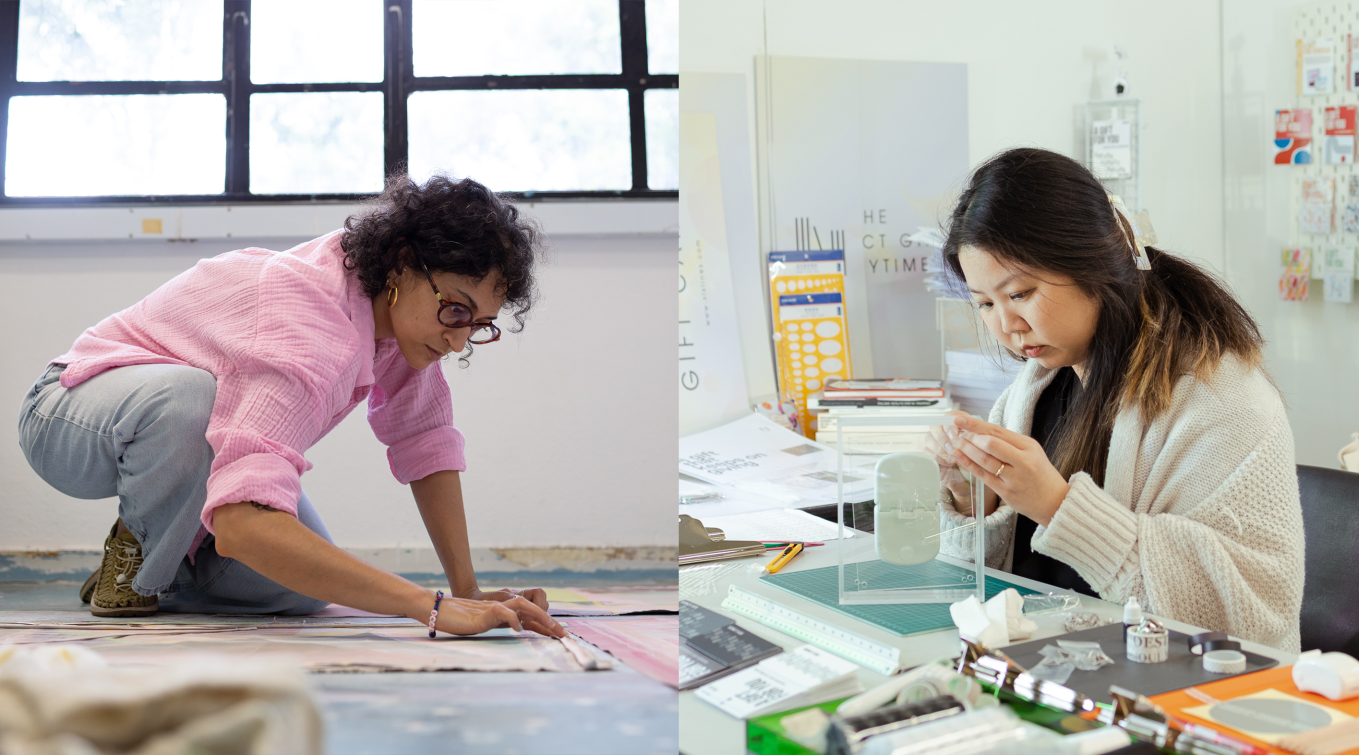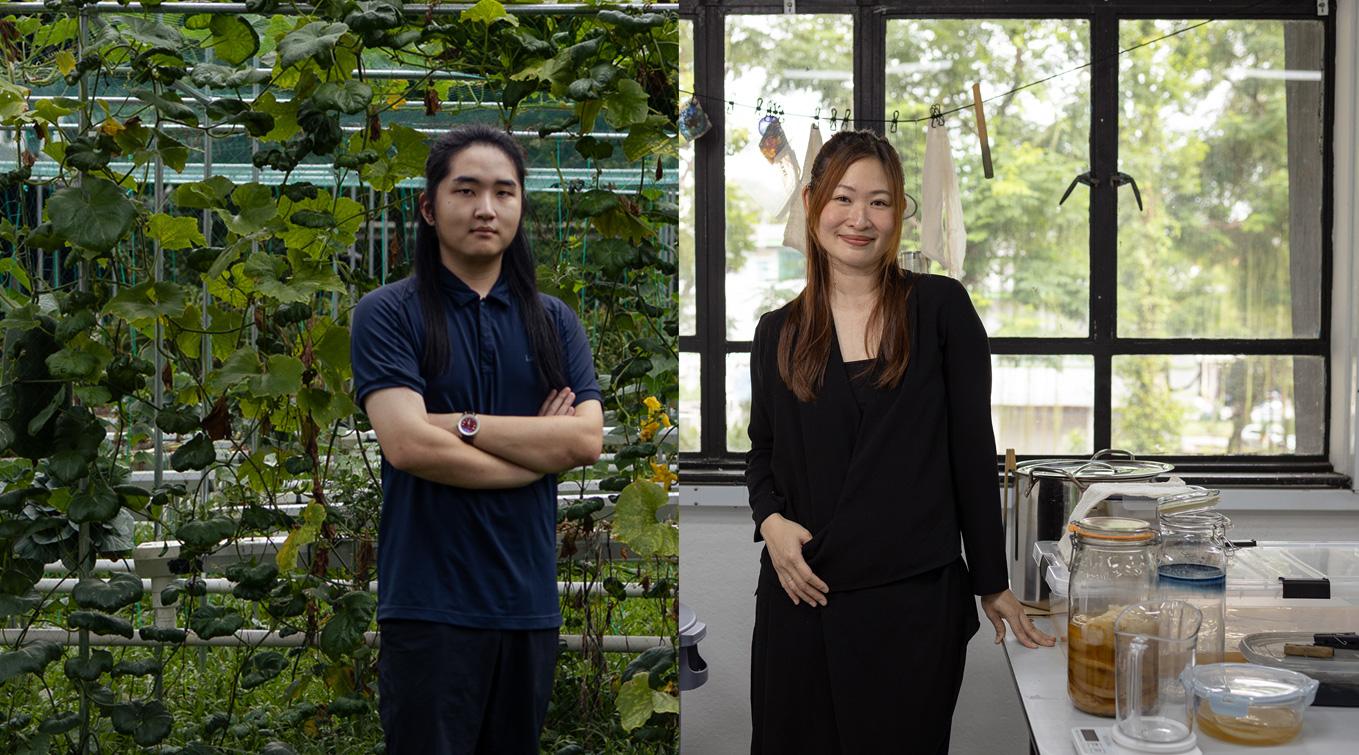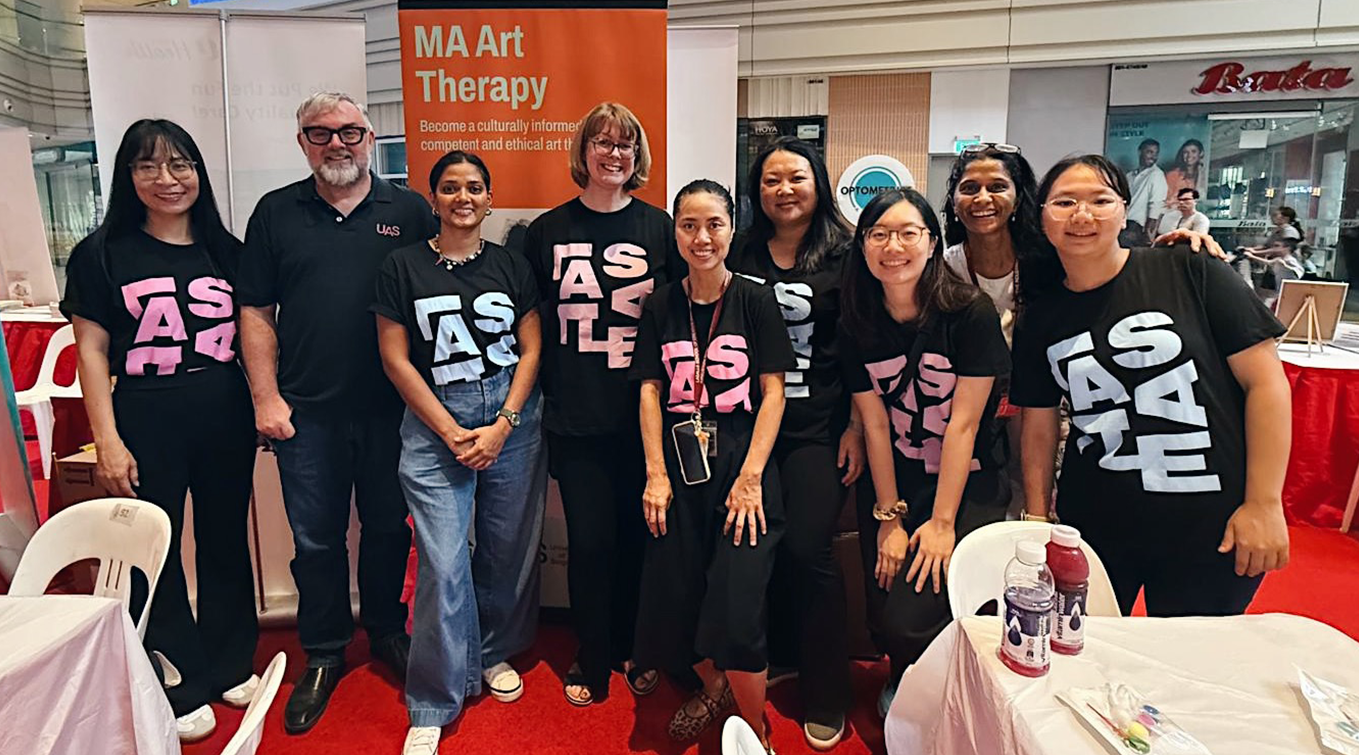In conversation with: Vanessa Yeo on pursuing an MA while working full time in FinTech
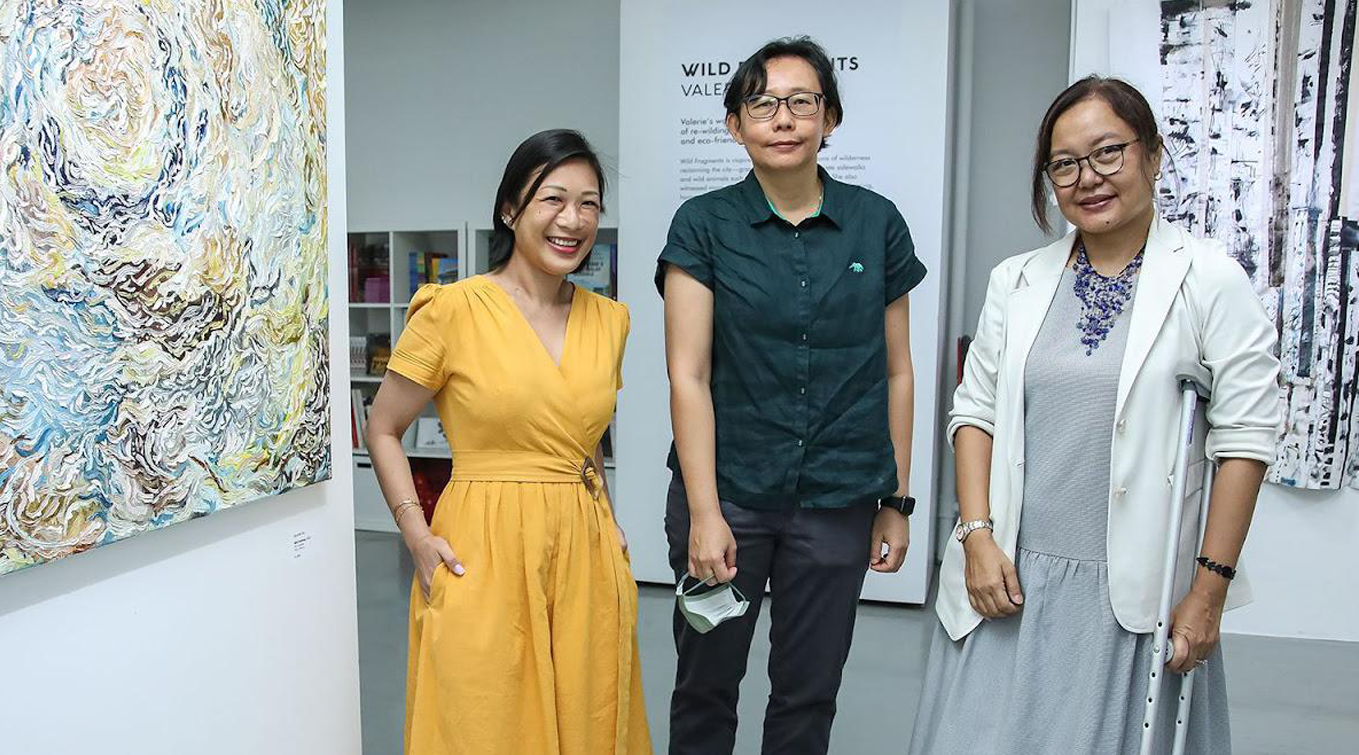
Had you encountered alumna Vanessa Yeo at her day job in Fintech at a multinational bank these past two years, you might not have realised that she was living a whole other life in the evenings and on weekends as an MA Asian Art Histories student, attending classes, doing readings, assignments and research, and visiting galleries and arts spaces.
“It was definitely challenging and took a lot of commitment,” admitted Vanessa, thinking back on her journey. But as a long time lover of fine art who aspired to be a curator, she credits the programme with opening doors for her to make connections with people in the industry and give her a foundation from which to pursue her dream of art research and curation.
After completing the MA programme in April this year, Vanessa immediately tapped on her connections in the industry to start publishing her writings and working on art exhibitions.
We spoke to Vanessa, fresh off the success of curating her first exhibition, and asked her to share more about her passion for art history, what motivated her to take the plunge into LASALLE’s MA Asian Art Histories degree, and what she valued about her time on the programme.
Your Bachelor’s was in Business Administration and you’ve spent the past 10 years working in banking, so why move into art?
My interest in art started when I was young. I enjoyed drawing and painting, as well as visiting the Singapore Art Museum. I have also been particularly curious about public sculpture, because working in hardy materials and creating work with such physical scale requires a combination of skills in science, art and craft. It thrills me when I come across a sculpture in a place where I least expect it, such as a park, a commercial building or shopping mall. I particularly like Southeast Asian sculptures that blend modern formalism with the sociocultural context or local traditions.
In my teens, I was fortunate enough to get into the Art Elective Programme which was where I first studied art history. The curriculum covered Western movements from neoclassical works, impressionism, surrealism and pointillism, and that was when I gained a deeper appreciation for art movements and styles of painting. When I started travelling, I made sure to continue visiting art museums as a way of connecting with the history and culture of a country.
I finally decided to delve abit more into art history a couple of years ago. I started with the LASALLE Short Course in Asian art history, which appealed to me because of its focus on Asia, as I was only familiar with Western art history.
What convinced you to take the plunge into the MA Asian Art Histories programme following your Short Course?
One of the key takeaways from the Short Course was that the term ‘Asian art’ cannot be easily categorised into a single genre. This made me keen to further understand the depth and range of Asian art and dive deeper into the topic through structured research methods.
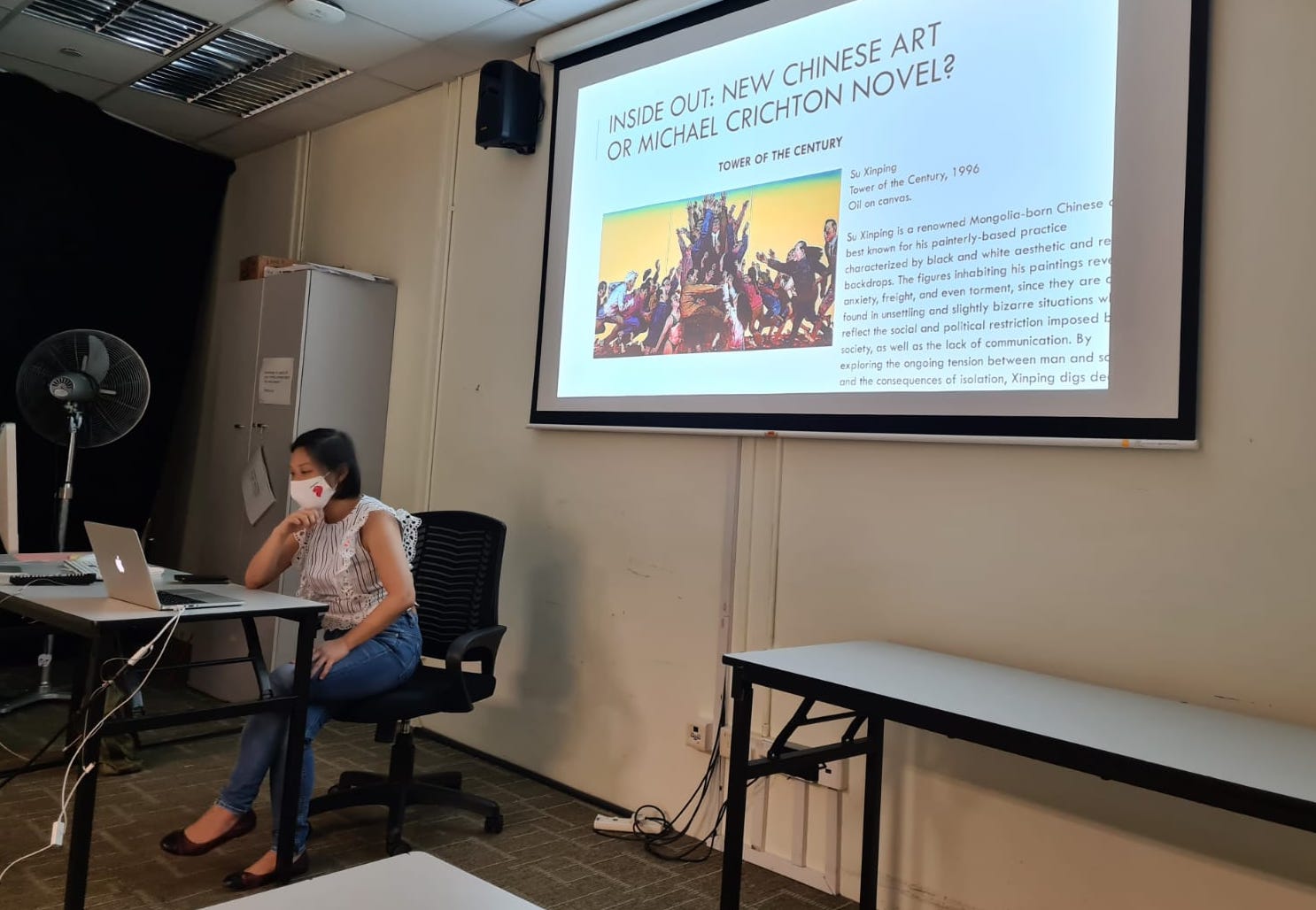
Vanessa doing a class presentation on Chinese art during her studies.
The workload was daunting, and studying for an MA meant that my free time during the evenings and weekends was taken up by readings and assignments, but at the same time, I felt like I was getting a lot of value because I gained a completely new skill set – being able to research, apply critical thinking and writing at an advanced academic level.
I also made some good friends through this programme, who were such a great source of support and encouragement so it didn’t feel like a solo endeavour and kept me going.
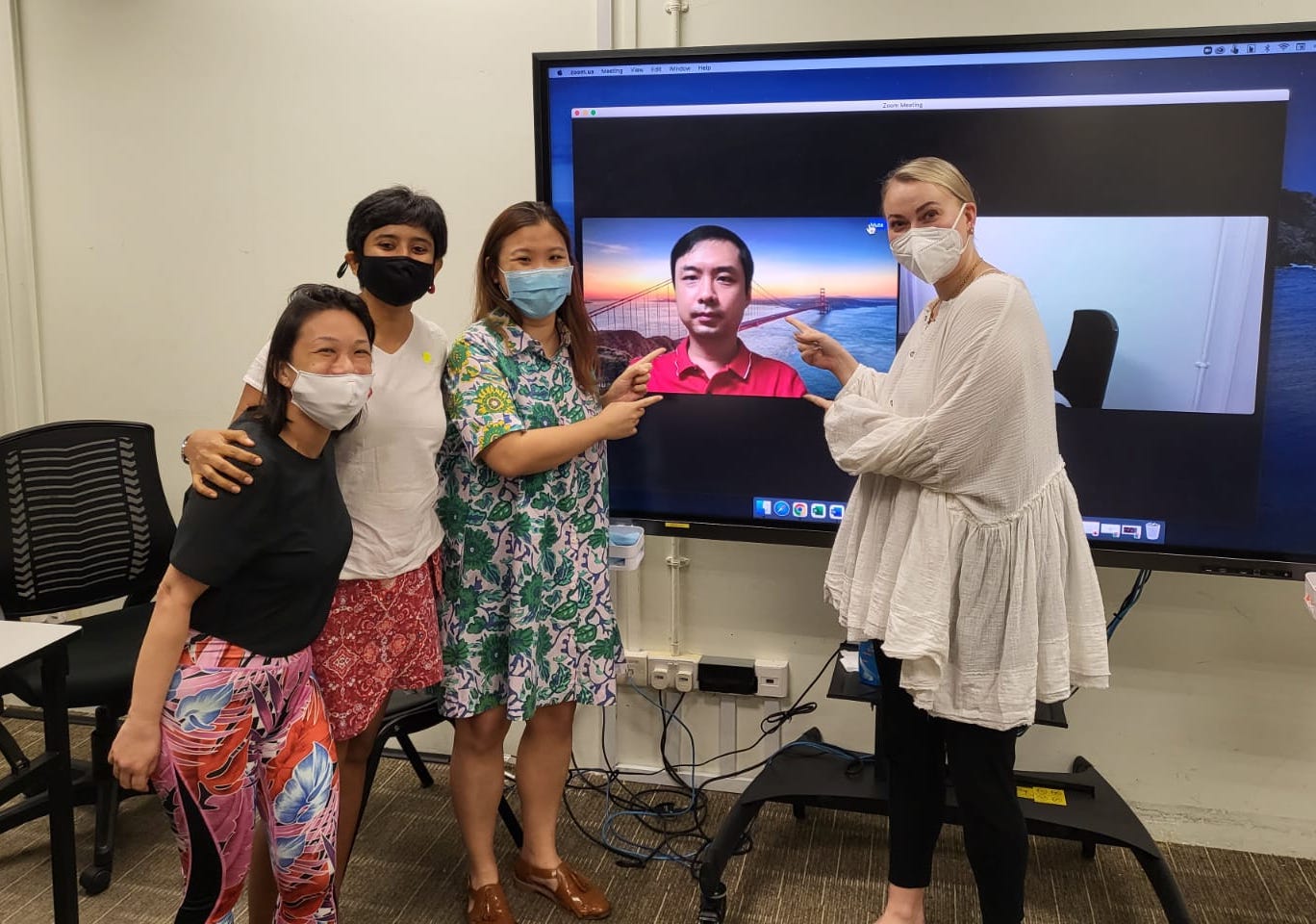
Vanessa (first from left) with her classmates.
What were your favourite aspects of the MA programme?
There were several. I enjoyed the field trips to local exhibitions and galleries. These gave us opportunities to discover new art works together as a class, and enabled us to meet gallery owners, art writers, artists and collectors.
Conducting the research interviews for my thesis also allowed me to get my foot in the door. My thesis was centred on the sculptural practices of Singapore-based practitioners Han Sai Por, Delia Prvacki and Kumari Nahappan. I interviewed Nahappan and Prvacki as part of my research and it was rewarding to be able to speak to them first hand about their practice. I now keep in touch with them as well.
Lastly, the study trip to Cambodia. The itinerary was well organised and gave me the rare opportunity to chat intimately with renowned Cambodian artists such as Leang Seckon, Lim Sokchanlina, and Sopheap Pic. We also visited various local art galleries such as the Silpak Trotchaek Pneik (YK Art House) founded by LASALLE alumna Reaksmey Yean, and met with gallery owners, collectives and other people in the ecosystem.
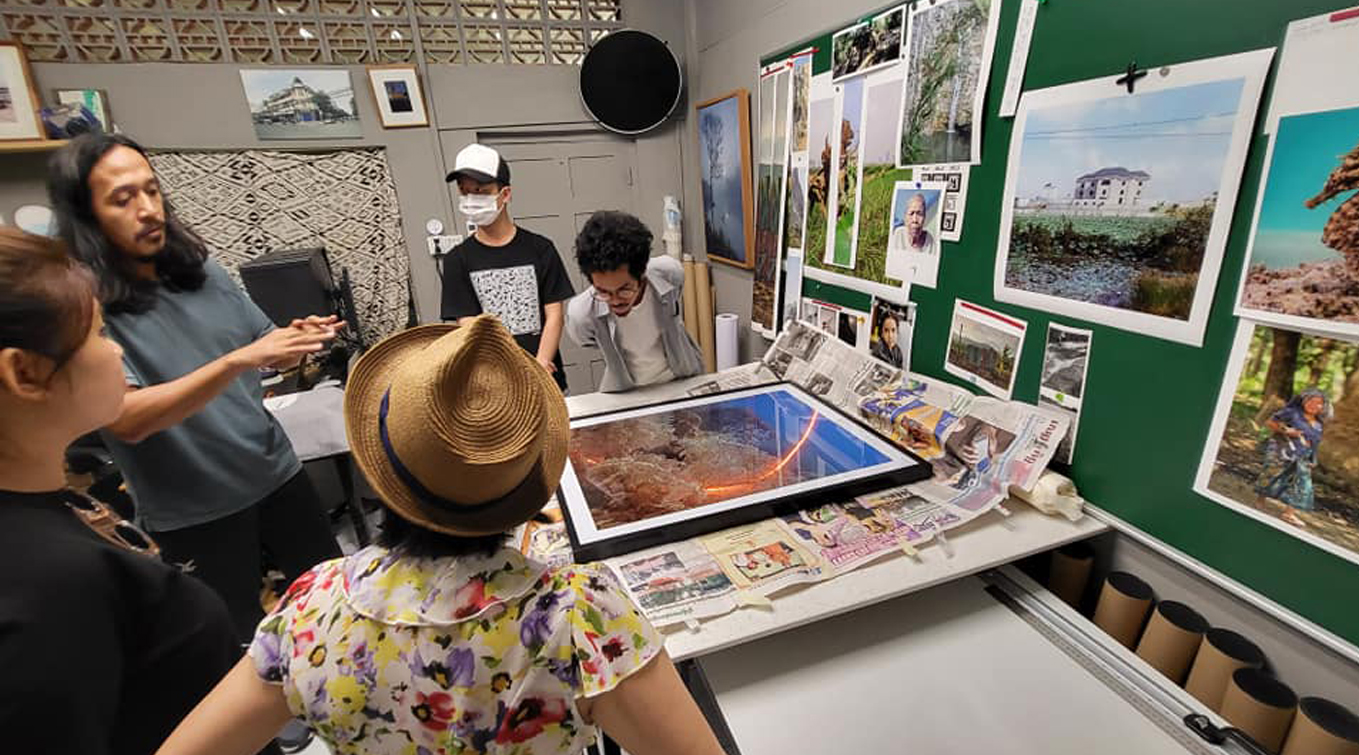
Vanessa and her classmates in the studio of artist Prum Ero, as he walks them through his photographic works of corals.
Vanessa (second from right), with Cambodian artist Leang Seckon (first from right) and Programme Leader Jeffrey Say, in Leang’s studio.
For the Asian Art Histories study trip to Phnom Penh, alumnus Reaksmey Yean served as a guide, taking students not just on a tour of art spaces and galleries, but into the private homes and studios of prominent Cambodian artists, including Sopheap Pich and Leang Seckon. The students were afforded an invaluable opportunity to experience first-hand the purpose of art and its relevance from the social spaces of artists.
Meanwhile the MA Fine Arts programme’s Bangkok itinerary was advised by Thai artist Nipan Oranniwesna, an old friend of the programme and previous visiting artist at LASALLE, who served as an important industry link with the Thai arts scene.
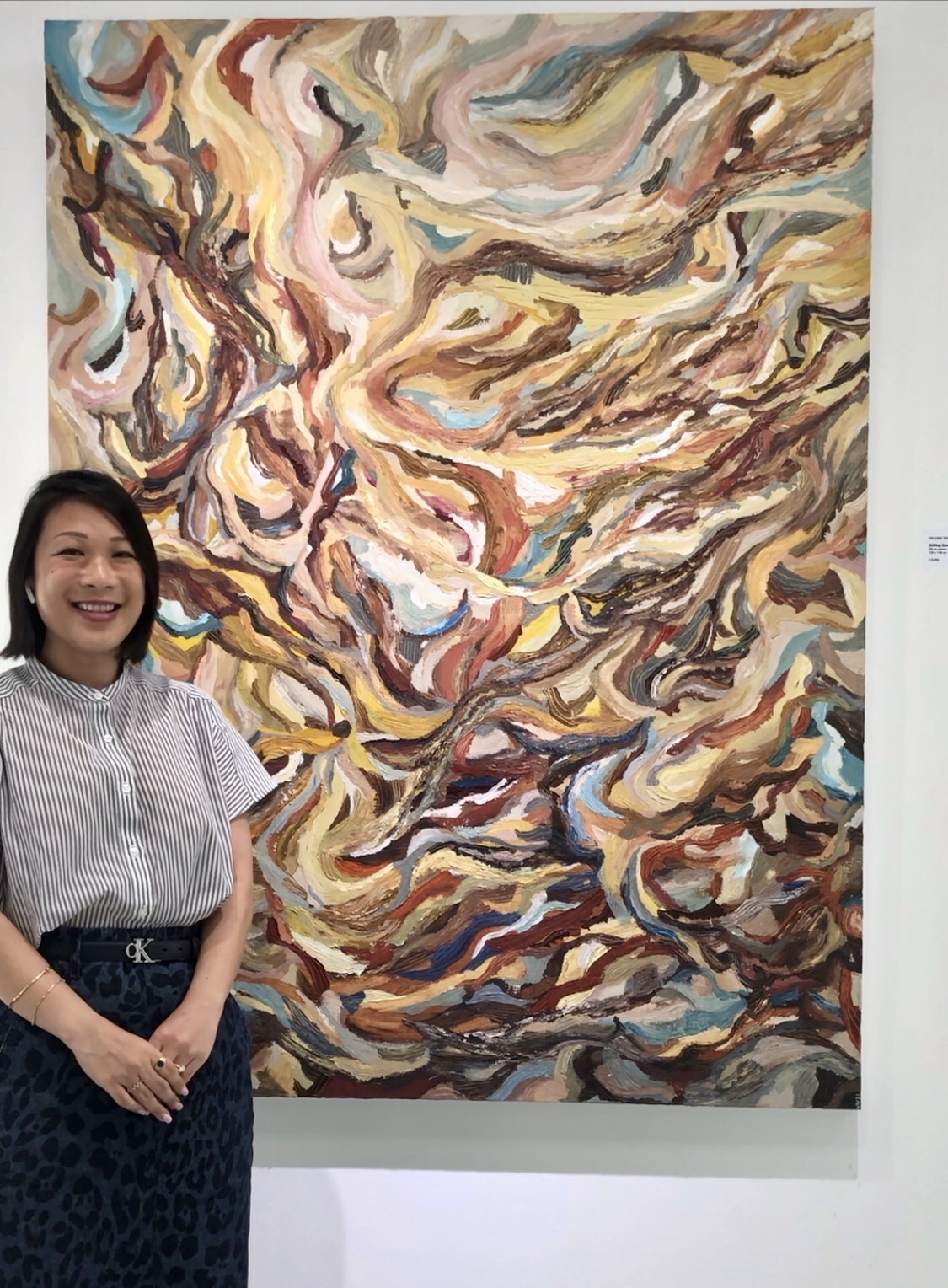
Now that your MA studies are over, what’s next for you?
I am still working full-time in a bank, but I have just finished curating my first art exhibition! It was a solo exhibition by abstract artist Valerie Ng at Maya Gallery.
I have also written an exhibition review for the online magazine Plural Art Mag which I hope will be published soon. And I’m involved in a couple of exhibitions which may open in the next six to eight months.
Aside from that, I’m still actively looking for opportunities to continue my research.
What would be your advice for people thinking about pursuing the MA Asian Art Histories programme?
Be generous with your knowledge. When it comes to assignments and readings, find classmates that you can work closely with to exchange feedback on written assignments and rehearse for presentations together.
If you plan to start working in the arts, remember to actively establish relationships and get to know people within the industry – professors, lecturers, students from other faculties, alumni, curators and practitioners. You will have the privilege to meet a diverse array of arts professionals during the programme, so make the most of it.
Apply now for our postgraduate programmes.




